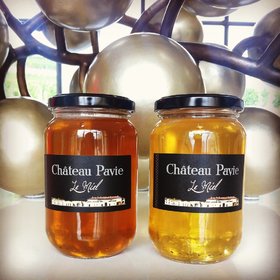News
Honey from Château Pavie's beehives
The idea had long been stirring in the minds of Gerard Perse and his son-in-law Henrique Da Costa. Like the harvest of grapes, diverse civilizations have gathered honey since antiquity. Honey exists in great variety, with an abundance of aromas and flavors expressing the complexity of different terroirs.

At Château Pavie, with its micro-terroirs of expressive character, bees benefit from a rich flo...